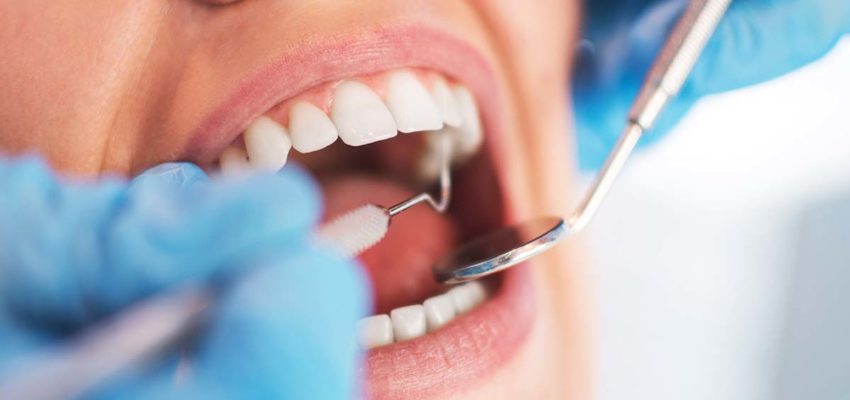Topsy Turvy Teeth

“A new truth”, warned Dr. Weston Price, “is like a sense. You are now able to see things that you could not see before.”
Dr. Weston Price, former Director of Research for the American Dental Association, spent 35 years of his professional career researching the systemic diseases of the heart, kidney, uterine, nervous system and endocrine systems, that resulted from toxins seeping out of root canal filled teeth. There is a certain percentage of people who are sensitive to these toxins that are manufactured within these dead teeth.
Dr. Price saw many truths that even today we have a hard time seeing for we are bogged down in, “but we’ve-always-always-done-it-that way” thinking. We are too habitual to adopt his sense of “new truth”. His observations led him far beyond the accepted remedies of that day. Incidentally, those remedies are basically the same treatments that are the foundation of today’s root canal fundamentals. He researched twenty-four of those fundamentals and found each to be lacking.
Even the age old common concepts were challenged by Price. They included: x-rays revealing the presence of infection; infections expressing themselves as bone absorption; a given dental infection will express itself approximately the same in all people; if pus is flowing from a tooth it is very dangerous to the patient; and local comfort and efficiency of treated teeth are the evidence and measure of the success if root filled tooth.
He made quite a stir in the dental community. Even with his vast experience, educational background, and thousands of controlled experiments, dentists were resistant to change their thinking about the root canal procedures that they had already been performing for a century.
What did Price find that convinced him that there were some people that could not tolerate root canals?
First he observed that if he removed root filled teeth from people suffering from kidney and heart disease, that most cases, they would improve. In an effort to establish a relationship between the tooth and the disease, he inserted the root filled teeth under the skin of a rabbit. Rabbits have a similar immune system to humans. In fact, a normal, non-infected human tooth (as removed for orthodontic reasons) can be inserted under the skin of a rabbit for a year with practically no reaction. A thin film will form over it, but microscopically there are no rejection cells present.
When a root filled tooth was implanted under the skin of a rabbit, the rabbit died within two days, sometimes with 12 hours. Price then took a small fragment of the tooth and inserted it under the skin of a rabbit. In weeks the rabbit would lose over 20% of its body weight, and die of heart disease if that is what the human donor had, or kidney disease if that is what the human donor had. To further challenge this observation, he removed the fragment and transferred it to another rabbit. In two weeks he observed a duplicate performance. In one case, he reimplanted the same tooth fragment in 100 rabbits, each in succession dying from the same disease that the human body had. In most cases he only transferred the fragment thirty times.
As obvious as the consequences were, dentists persisted in placing root canal fillings. This, of course, caused a huge argument among dentists, and soon Dr. Percy R. Howe published a paper in the Journal of the National Dental Association rejecting Price’s findings. Howe injected large amounts of the bacteria (streptococcus) into rabbits, and found no averse reaction. This 1920 publication is still used as proof that root filled teeth are not harmful to humans.
Price investigated the methods of sterilisation of root canals (similar to today’s technology) and found that teeth retained their sterility for only about two days. Most lost it within twenty-four hours. Why? Where were these bacteria hiding? Yes, they were hiding. A tooth contains enamel, dentin, and a central pulp chamber. The central pulp chamber can be sterilised to a reasonable degree by removing its contents of nerves, arteries, and veins. The dentin, however, is composed of thousands of tiny “dentin tubules”. Although microscopic in size, these tubules are quite adequate to house billions of bacteria. If one were to take a front tooth and arrange the dentin tubules end to end, they would reach for three miles.
Where do these bacteria come from? They are normal inhabitants of the mouth. When a tooth becomes decay prone, they invade the tooth and start killing tooth tissues. When they reach the pulp chamber, they invade not only the pulp tissue, but also the dentin tubules. When a dentist cleans out the pulp chamber, he removes all the bacteria in the chamber, but those little guys who went into the tubules are still there. Then the dentist seals the tooth, and that’s when a new truth begins.
In an “anaerobic” condition, or one that contains no oxygen, these streptococci (specifically diploic and short chain strains from the viridens group) undergo a slight change in body form and metabolism to adapt to this new environment. Now, instead of producing slightly offensive waste product, these transformed bacteria produce a potent poison called a toxin. Our immune system cannot get in through the tiny holes in the outside of the root to destroy the bacteria. The toxins can seep out. Fluids containing nutrients can seep into the tooth, so the bacteria continue to thrive in confinement.
If the body launches a big fight against toxins, then pus forms around the tooth. Conventional wisdom says that pus is bad for the patient, and we must give antibiotics until it is gone. Price found that pus was nearly sterile, and, though disagreeable, it was a sign of successfully quarantining the toxins from the tooth. That was certainly a new idea, and not readily accepted as a “new truth”.
Another upsetting situation pointed out by Price was that x-rays frequently miss abscesses that are on the front or back of a tooth. About 30% of the teeth have extra canals which may exit anywhere from half way down the tooth, to all the way down at the tip they are supposed to. They can exit on the front, back or side of the tooth. Those “other” canals that abscess are the ones that are apt to be missed on x-ray.
If the body’s immune system is compromised, then very little action is initiated around a root filled tooth. Certain enzymes may escape which stimulate the bone to form what is termed “condensing osteitis” around the tooth. This is heavier than usual bone. It may actually fuse the surrounding bone to the tooth. On x-ray films, this will appear to be what is considered excellent healing. This tooth gives no local trouble as far as pain and pus are concerned, but the toxins that seep out get into the circulation and with little immune system interference, they seek a specific organ to attack. This is called tissue localisation. Price had demonstrated this by transferring sections of root filled teeth from animal to animal generating the same disease with each transfer.
If your biological percentage for two generations back, including brothers and sisters of your grandparents, were resistant to degenerative diseases, then you are of good stock, and are not likely to be offended by a root canal.
Many people have root canals that don’t give problems. How does one distinguish between the susceptible and the non-susceptible? Price recorded 140,000 determinations in 1200 patients to come up with his answer to this question. Bottom line, it is heredity. If your biological percentage for two generations back, including brothers and sisters of your grandparents, were resistant to degenerative diseases, then you are of good stock, and are not likely to be offended by a root canal. On the other hand, if there was a high frequency of heart, kidney, diabetes, reproductive disorders, etc, then you might be susceptible – if you experience “overload”.
Most of us are aware that abuse of alcohol, drugs and caffeine stresses our systems. Price determined that there were other stresses that were just as great. Exposure to these types of stresses tended to push people over their threshold and allow the root canal tooth to become a problem. The challenge would exceed resistance.
He found that the two greatest stresses were pregnancy and influenza (the flu). Under the influence of either of these conditions, the toxins from root filled teeth were much more apt to produce disease at your specific susceptible site. Other stresses that upset root filled teeth were grief, anxiety, chilling, severe hunger, acute and chronic infection.
What if you have a root canal and want it removed? Do you just pull the tooth? No, this might give you more problems. When these teeth are removed, the attachment from the tooth to the bone called the periodontal ligament must be removed with a dental bur at the same time. This irritates the old bone, and stimulates it to form a new bone. Recently in my studies at the University of Colorado where I was finishing a masters program in science, we looked at biopsies of the bones under the root filled teeth that we removed. The lymphocytes of autoimmune disease were embedded at least a millimetre into the bone, and sometimes more. All this must be removed if good bone healing is to be achieved.
Dr. Price, you certainly gave us a new insight with your “new truth” and have given many of us dentists cause for alarm. We must heed your advice and voluminous research and set our personal prejudices aside to consider your investigations. After all, it is the quality of total life that is our concern, not just the tooth, the whole tooth and nothing but the tooth.
Hal A. Huggins, DDS MS
Huggins Diagnostic Center
Colorado Springs, CO



